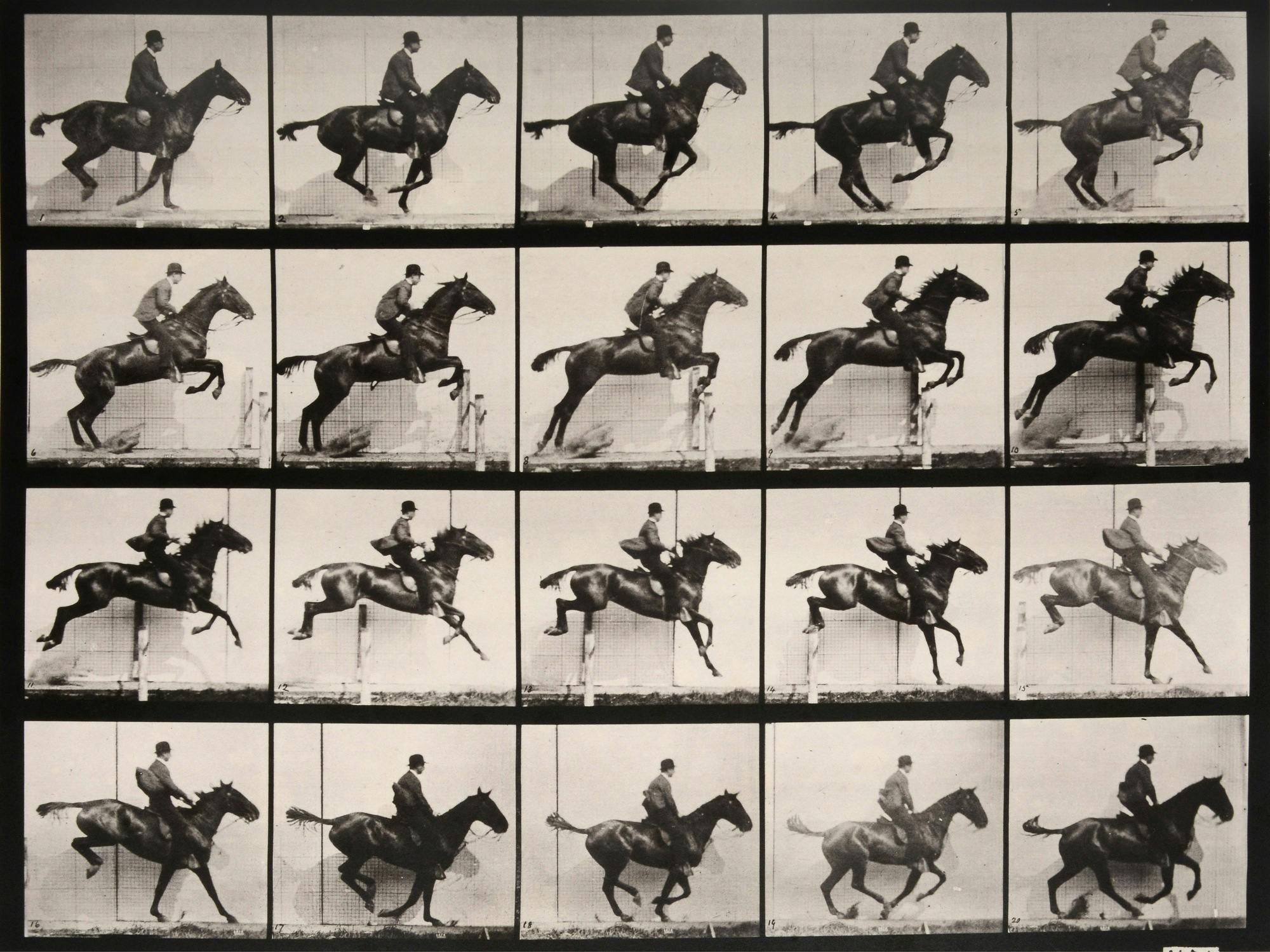Eadweard Muybridge
Animal Locomotion: Plate 628 (Man Riding Galloping Horse), 1887’ © Eadweard Muybridge. Image courtesy of Beetles+Huxley.
How Eadweard Muybridge created these photos as one photo is simply inventing a photographic technique called “stereoscopic stop-motion photography,” which allowed him to capture rapid movement in a series of still images. A series of multiple cameras could be triggered by tripwires to produce ground-breaking sequential images. He wanted all his subjects to carry out a single activity.
Harold Edgerton
Harold Edgerton, Shooting the Apple, 1964, © Harold & Esther Edgerton Foundation, 2012, courtesy of Palm Press, Inc.
- Edgerton was a pioneer in using short-duration electronic flash in photographing fast events photography, subsequently using the technique to capture a bullet during its impact with an apple.
Why was this important?
Both Eadweard Muybridge and Harold Edgerton created astonishing photos.
- Eadweard Muybridge made three major achievements in photography: first, the development of a photographic process fast enough to capture bodies in motion; second, the creation of successive images that, mounted together, reconstituted a whole cycle of motion rather than isolating a single moment; and third, lead to advances in areas as diverse as zoology, painting, and motion pictures. Eadweard created a way to snap a picture by using a tripwire to help capture the movements of animals/humans' shapes and forms from doing an activity. Harold Edgerton invented stop-action, high-speed photography, helping push the obscure stroboscope from a laboratory instrument into a household item. He used the technique to make a body of work that's revered both for its scientific advancement and its aesthetic qualities.




No comments:
Post a Comment